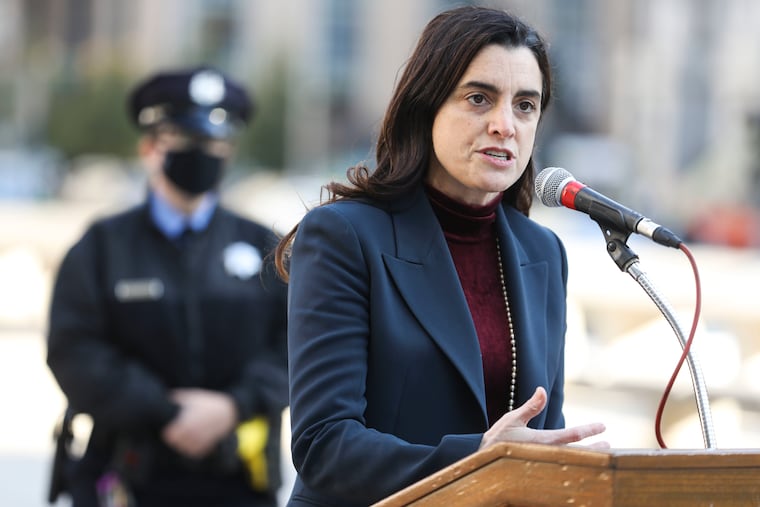Philly will waste the big opportunity of American Rescue Plan funds if they’re not used strategically | Opinion
Our City has a rare opportunity for targeted spending on our biggest issues including gun violence, poverty, and opioids.

Over the next year, the City of Philadelphia will receive $1.4 billion through the American Rescue Plan (ARP). This funding represents a once-in-a-lifetime opportunity for Philadelphia to recover from the COVID-19 pandemic and tackle some of its biggest challenges, but only if the funding is used well.
City spending increased by $1 billion under the Kenney administration in the four years prior to the pandemic while the public’s satisfaction with City services declined and only half of residents reported feeling safe in their neighborhood. Given this, the question for City leadership is: How do we spend the ARP funds strategically to have the biggest impact on our city?
First, the City must create a detailed spending plan for ARP funds that targets funding to address Philadelphia’s challenges. The plan must have clearly defined goals, metrics for success, and rigorous program evaluation to allow the City to better understand what is working and whether continued investment is merited.
» READ MORE: Federal funds offer Philly a chance to think bigger | Editorial
According to federal guidance, the City has a great deal of freedom in ARP use. It would be easy for the City to continue its pre-pandemic trend of increasing spending without a strategic vision. The mayor’s current budget proposal does just that — it treats the ARP funds as flexible revenues to the general fund. This is a mistake, as outlining specific spending goals and tracking these funds and their outcomes is critical. As such, the City should develop a public portal for ARP spending over time, similar to New York City’s Hurricane Sandy Funding Tracker.
As detailed in a recent report by my office, the City should first set aside ARP funds necessary to fill the tax revenue shortfall in FY22 and in future years as the economy recovers. Using a conservative estimate for potential shortfalls through FY25, the City could allocate $840 million for this ($450 million in FY22, $250 million for FY23, $100 million for FY24, and $40 million for FY25).
The remaining ARP funds should be used over the next four years to address Philadelphia’s most pressing challenges:
$181 million to combat gun violence. Philadelphia has the highest per capita homicide rate of the top 15 largest cities. Last year, the city had its highest homicide total in 30 years. This investment, in line with similar levels of funding per shooting victim as cities like NYC and Los Angeles, should be used to adequately fund evidence-based violence reduction programs.
$117 million to address poverty. As of 2019, Philadelphia had the worst poverty rate of the top 15 largest cities. Funding should be used to help low-income Philadelphians access basic necessities like food and housing, including a basic income pilot program.
$40 million to tackle the opioid epidemic. Philadelphia has the highest drug overdose rate of the top 25 largest U.S. counties. Funding should be used to increase access to treatment and other services.
» READ MORE: Biden’s proposed economic plans reverse recent history. Will voters follow?
$101 million for business recovery and growth. Given that tax cuts appear to be prohibited from ARP funds, the City should invest $70 million to meet the immediate needs of the small business community, as well as $27 million to restore and expand the Commerce Department’s budget to better support the industries hardest hit by the pandemic, and $4 million to launch a minority business accelerator, which has proven successful in Cincinnati.
Lastly, the City should fully restore the budgets of Parks and Recreation and Library, and reverse cuts to back office functions such as the City’s Office of Fleet Management. The savings from these cuts, which do not appear strategic, are much smaller than the potential savings from operational inefficiencies that have been left unaddressed. My office estimates the savings from better overtime management alone could be $73 million per year.
The City should also plan for how to sustain successful investments when federal relief comes to an end in 2024. Tracking the funds and measuring the success of the programs is key, as this allows the City to discontinue programs that aren’t working and redirect funding to programs that work.
I believe we owe it to the public to strategically utilize these funds. This infusion of funds is rare opportunity — let’s not squander it, but use it to make Philly overcome, rise, and grow to its full potential.
Rebecca Rhynhart is Philadelphia’s City Controller.